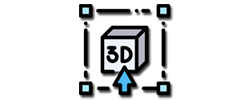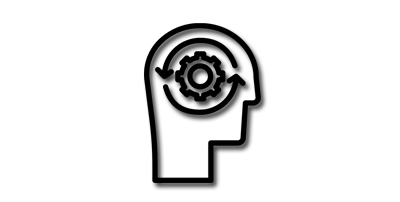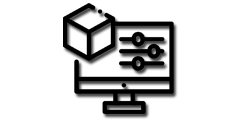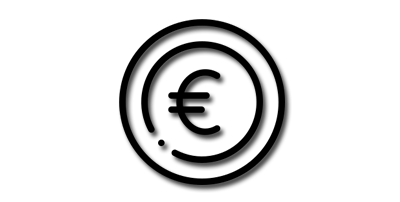It is still a relatively new technology, with plenty of vendors that sell their own 3D printers and the substance used to create printed objects—filament. Filament to 3D printers is ink to the conventional printers we all know and love.
Unlike standard ink cartridges, however, there are several variations of filament on the market, each with its own unique properties. This guide is meant to break down the different types of filaments available today, outlining their defining characteristics to help users of 3D printers identify the right filament for the job.
So, let’s dive into some of the more traditional and well-known filaments available: PLA, ABS, and Nylon.
PLA—polylactic acid
PLA, short for polylactic acid, is currently the standard filament type with the lowest barrier to entry in use. It’s a biodegradable thermoplastic, meaning it’s much more environmentally friendly when compared to other plastics. It is produced using food starches, so it has a more agreeable odor (if any) and may be the safest choice for use in indoor environments as any emissions may be more biocompatible.
PLA generally doesn’t contract once it cools down after printing, meaning if you’re using a printer that lacks a heated bed, it’s easier to maintain bonds between the plastic layers. It’s not quite as robust or tough as its counterpart ABS (more on that below), meaning it’s more brittle, but offers sound strength and rigidity with increased user-friendliness. In the past, ABS was considered the optimal material for best print appearance, but in recent years optimizations to PLA formulas and print settings have made this thermoplastic the best choice for general, run-of-the-mill 3D printer projects and household goods you would create.
Print temperature range for PLA will depend on the exact printer and project, but the accepted standard is between 185°C–225°C. PLA has one drawback, and that is that it must remain under 45°C after printing. So, printed parts will deform when left in a car on a hot summer’s day.
ABS—acrylonitrile butadiene styrene
ABS, short for acrylonitrile butadiene styrene, is a tried and true favorite of engineering sorts—also a thermoplastic, it’s about 20% lighter than PLA and offers more flexibility, but it has none of the user-friendliness of PLA, which makes it a rather niche go-to when it comes to 3D printer projects.
Unlike PLA, a heated print bed, and even a 3D printer enclosure may be called for when using ABS filament. Otherwise the printing layers, once deposited, will cool and the plastic will warp and contract, throwing the entire print job off measure. When it comes to emissions, again unlike PLA, its odors are not pleasant and can cause acute migraines, and thus should only be used in a well-ventilated area. These limitations are among the reasons why PLA has taken dominance when it comes to more mainstream 3D printer projects—but due to its durability, it’s ideal for printing specific parts that must withstand varying stress or loading cycles like enclosures or functional prototypes.
Print temperature range for ABS runs between 230°C–260°C.
Nylon—polyamide
Alongside both PLA and ABS, Nylon, also known as polyamide—a repeating molecule linked by an amide bonds—is another niche of filament that is a high-end engineering thermoplastic. It has extreme toughness and durability, but requires excessive fine-tuning to produce successful prints, so it’s best suited to expert users who want to print small machine parts like gears.
The filament itself is strong and flexible, yet light and resilient to “wear and tear” associated with continual use. For reference, weed whacker trimmer line is made with Nylon filament. Due to its increased strength and elasticity over PLA and ABS, Nylon is good for industrial applications, such as machine parts or tools, or replacement of automobile parts. It can also bond to itself very well, meaning it’s a great filament for making parts that can be drilled, tapped, or screwed. To add to its versatility, the filament can also be dyed any number of colors by users—the dying, however, must happen prior to printing.
Nylon doesn’t come without its drawbacks, however—the filament is prone to humidity. To print accurately with Nylon, one must keep the spool completely dry and out of humid environments, otherwise it makes a mess.
Print temperature range for Nylon is between 220°C–260°C and should be used with a heated print bed, and an enclosure for larger parts. Some users find that a Garolite bed is necessary along with an application of glue stick to the surface to promote adhesion.
Source: M3D Blog






